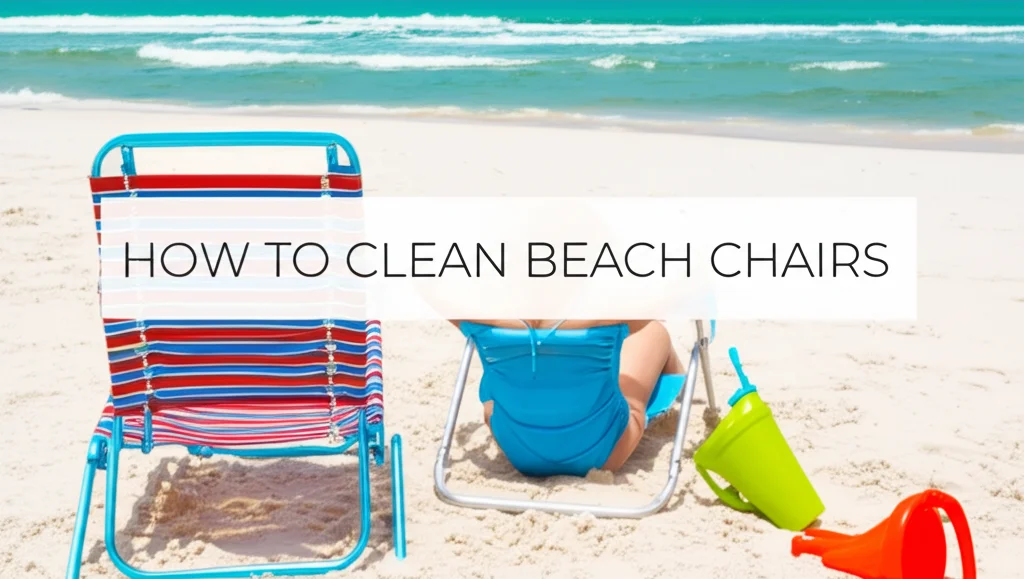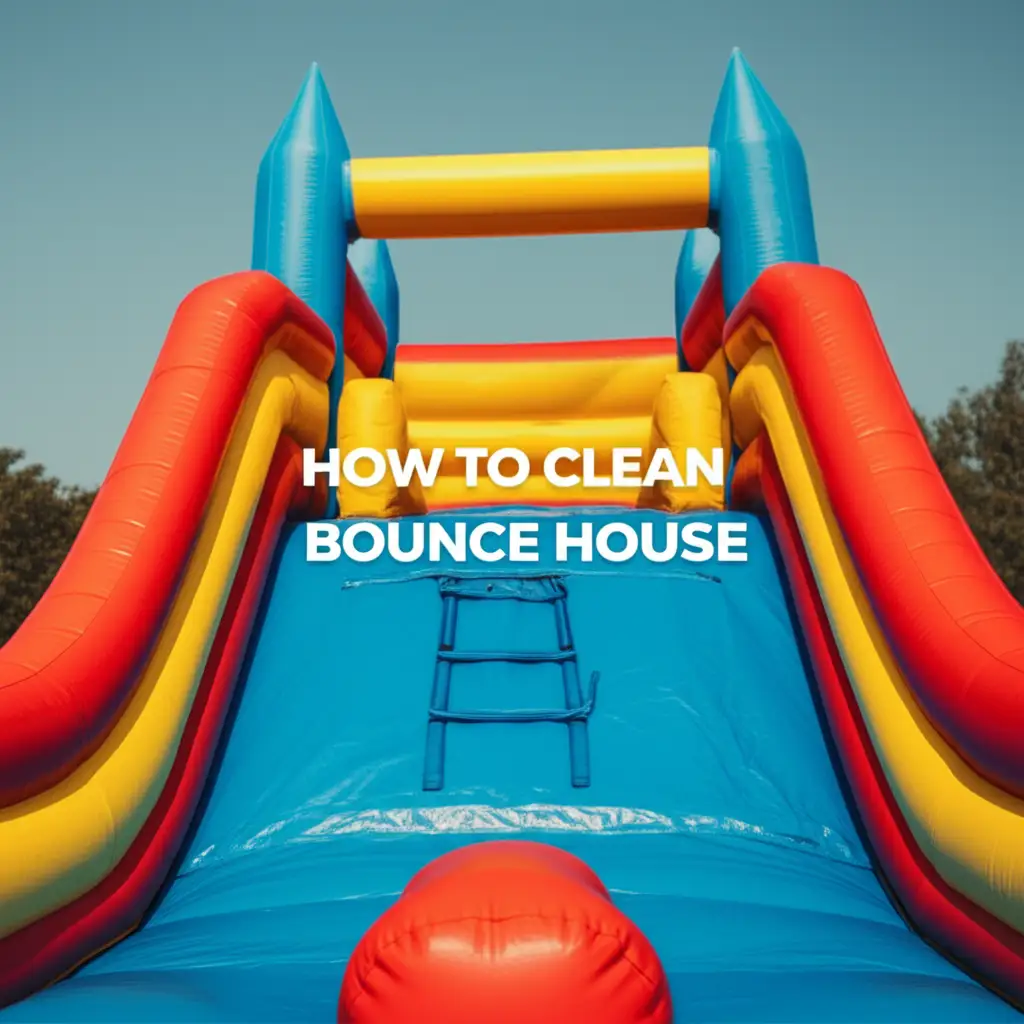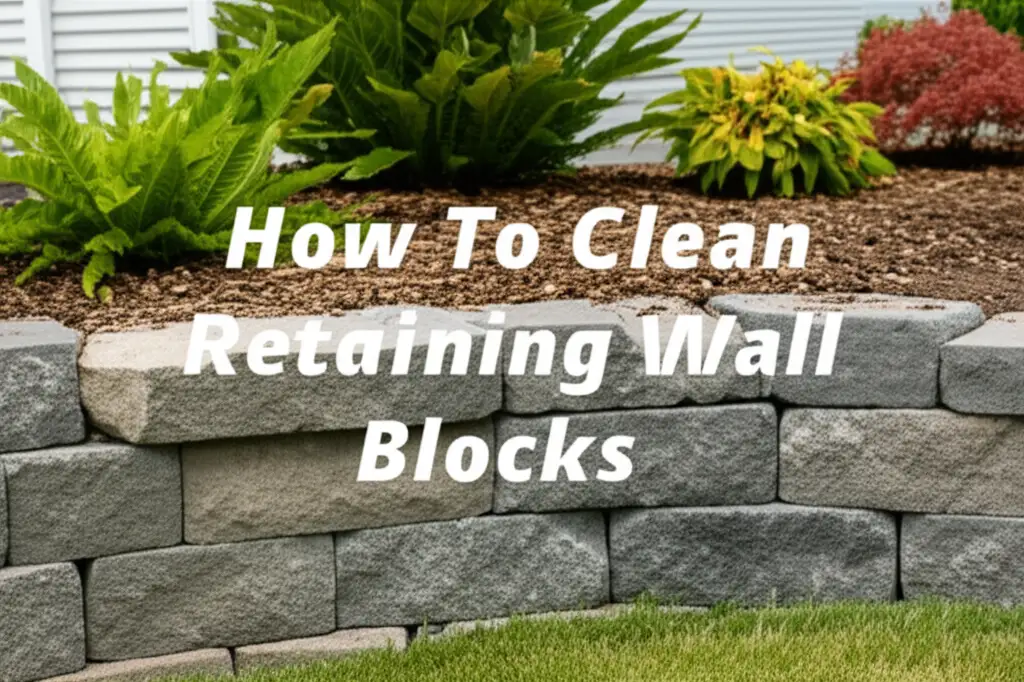· Outdoor Cleaning · 7 min read
How To Clean Beach Chairs

Keeping Your Relaxation Spot Sparkling: How To Clean Beach Chairs
Do you love the feeling of warm sand between your toes and the sun on your skin? Beach chairs are essential for enjoying a relaxing day by the ocean, but they often come home covered in sand, salt, and sometimes even sticky residue. Knowing how to clean beach chairs properly will extend their life and keep them looking their best. This guide will walk you through everything you need to know, from quick rinses to deep cleaning methods, ensuring your chairs are ready for your next seaside adventure. We’ll cover cleaning different materials, tackling stubborn stains, and preventative measures to keep your chairs in top condition.
Takeaway:
- Regularly rinse your beach chairs with fresh water after each use.
- Use mild soap and water for general cleaning.
- Address stains promptly with appropriate cleaning solutions.
- Protect your chairs from the elements when not in use.
Quick Answer:
To clean beach chairs, start by rinsing off loose sand and debris with water. Then, mix mild soap with warm water and scrub the chair with a soft brush. Rinse thoroughly and allow to air dry completely before storing.
Understanding Your Beach Chair Material
Before you start cleaning, it’s important to identify what your beach chair is made of. Different materials require different cleaning approaches. Common materials include aluminum, plastic, fabric (like polyester or nylon), and wood. Using the wrong cleaning method can damage the chair, so knowing your material is key. Let’s break down the most common types and how to approach cleaning them.
- Aluminum: Aluminum chairs are lightweight and rust-resistant. You can easily clean them with soap and water, and even use a dedicated aluminum cleaner for a deeper shine.
- Plastic: Plastic chairs are durable and easy to maintain. They can withstand harsh weather conditions and are typically cleaned with a simple soap and water solution.
- Fabric: Fabric chairs, often made of polyester or nylon, require more careful cleaning. Avoid harsh chemicals and consider spot cleaning or hand washing.
- Wood: Wooden beach chairs need special care to prevent warping or cracking. Avoid prolonged exposure to water and use wood-specific cleaning products.
The Daily Rinse: Preventing Build-Up
The easiest way to keep your beach chairs clean is to rinse them off after every use. This simple step prevents sand, salt, and other debris from building up and becoming difficult to remove. A quick spray with a garden hose is usually sufficient. Don’t underestimate the power of this preventative measure! It will save you a lot of time and effort in the long run.
Consider keeping a small bucket of fresh water and a sponge handy for a quick wipe-down if a hose isn’t available. This is especially helpful for fabric chairs, as it prevents salt from setting into the fibers. This daily habit will significantly extend the life of your chairs and keep them looking fresh.
Deep Cleaning: Soap, Water, and a Soft Brush
For a more thorough cleaning, you’ll need mild soap, warm water, and a soft-bristled brush. Avoid abrasive cleaners, as they can scratch or damage the chair’s surface. Start by mixing a small amount of soap with warm water in a bucket. Dip the brush into the soapy water and gently scrub the chair, paying attention to areas with visible dirt or stains.
Rinse the chair thoroughly with clean water, ensuring all soap residue is removed. For fabric chairs, avoid soaking the material. Instead, use a damp cloth to wipe away the soap. Allow the chair to air dry completely before storing it. You might also consider cleaning the area around your beach chairs, like a balcony, to maintain a clean outdoor space.
Tackling Stubborn Stains on Beach Chairs
Sometimes, a simple rinse and scrub aren’t enough to remove stubborn stains. Different types of stains require different approaches. Here’s a guide to tackling some common beach chair stains:
- Sunscreen: Sunscreen stains can be oily and difficult to remove. Try using a degreasing dish soap and warm water. Gently scrub the stain and rinse thoroughly.
- Food and Drink: For food and drink spills, act quickly! Blot the stain with a clean cloth and then use a mild soap and water solution.
- Rust (on Aluminum): While aluminum is rust-resistant, it can sometimes develop surface rust. Use a specialized aluminum cleaner or a paste of baking soda and water to remove rust spots.
- Mold and Mildew: If your chairs have been stored damp, they may develop mold or mildew. Mix a solution of bleach and water (1 part bleach to 10 parts water) and apply it to the affected areas. Always test this solution on an inconspicuous area first.
Caring for Specific Chair Types
Let’s dive deeper into cleaning specific beach chair materials. Knowing the nuances of each material will help you achieve the best results.
- Cleaning Aluminum Beach Chairs: Aluminum is relatively low-maintenance. A regular wash with soap and water is usually sufficient. For tougher grime, use a dedicated aluminum cleaning product.
- Cleaning Plastic Beach Chairs: Plastic chairs are incredibly durable. You can use a pressure washer on a low setting to clean them quickly and efficiently.
- Cleaning Fabric Beach Chairs: Fabric chairs require the most care. Spot clean stains immediately and avoid harsh chemicals. Consider using a fabric protector spray to repel water and stains.
- Cleaning Wooden Beach Chairs: Wooden chairs need to be protected from moisture. Use a wood cleaner and conditioner to keep the wood hydrated and prevent cracking.
Storage and Protection: Extending Chair Lifespan
Proper storage is crucial for extending the life of your beach chairs. Before storing them, ensure they are completely dry to prevent mold and mildew growth. Store them in a cool, dry place, away from direct sunlight. Consider using chair covers to protect them from dust and the elements.
If you have limited storage space, foldable beach chairs are a great option. They can be easily stored in a closet or garage. Regularly inspect your chairs for any signs of damage and address them promptly to prevent further deterioration. You can also consider cleaning your boat windows while you’re preparing for summer fun!
Frequently Asked Questions
Q: How often should I clean my beach chairs? A: You should rinse your beach chairs after each use and deep clean them at least once a month, or more frequently if they are heavily used. Regular cleaning prevents build-up and extends their lifespan.
Q: Can I use bleach to clean my beach chairs? A: You can use a diluted bleach solution (1 part bleach to 10 parts water) for mold and mildew, but always test it on an inconspicuous area first. Avoid using bleach on fabric chairs, as it can cause discoloration.
Q: What’s the best way to remove sand from fabric beach chairs? A: Let the sand dry completely, then use a brush or vacuum cleaner to remove it. Avoid using water until the sand is dry, as it will only make the problem worse.
Q: How do I prevent my beach chairs from fading in the sun? A: Store your chairs in a shaded area when not in use. Consider using chair covers or applying a UV protectant spray to help prevent fading.
Q: Can I use a pressure washer to clean my beach chairs? A: Yes, you can use a pressure washer on plastic chairs, but use a low setting to avoid damaging the material. Avoid using a pressure washer on fabric or wooden chairs.
Conclusion
Keeping your beach chairs clean doesn’t have to be a chore. By following these simple tips and tricks, you can easily maintain their condition and enjoy many more relaxing days by the sea. Remember, regular rinsing, proper cleaning solutions, and careful storage are key to extending the life of your chairs. So, go ahead and enjoy the sun, sand, and surf, knowing that how to clean beach chairs is now a breeze! Don’t forget to check out our other cleaning guides for more helpful tips on keeping your outdoor spaces sparkling clean.
- beach chair cleaning
- outdoor furniture
- summer cleaning



